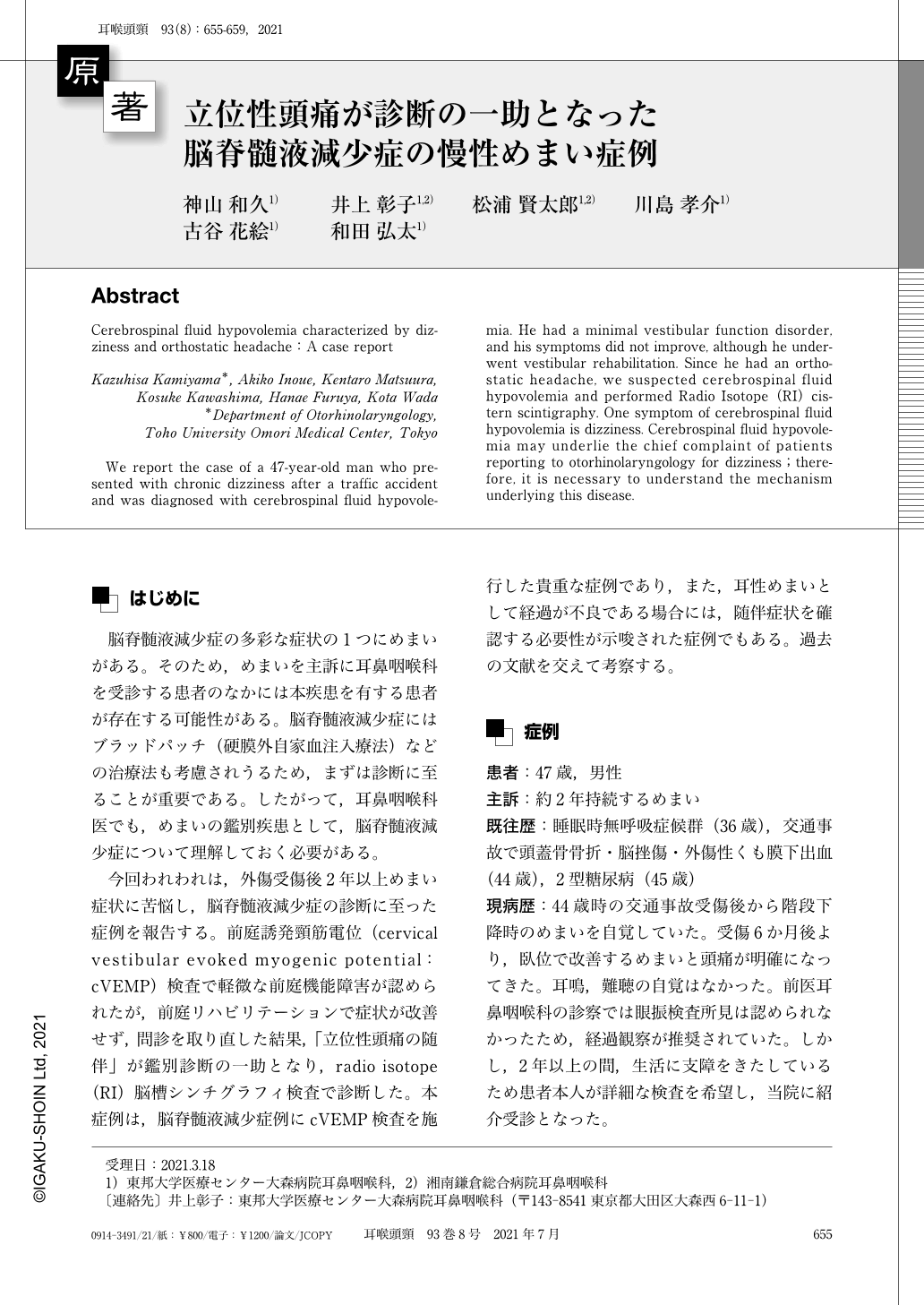Japanese
English
- 有料閲覧
- Abstract 文献概要
- 1ページ目 Look Inside
- 参考文献 Reference
はじめに
脳脊髄液減少症の多彩な症状の1つにめまいがある。そのため,めまいを主訴に耳鼻咽喉科を受診する患者のなかには本疾患を有する患者が存在する可能性がある。脳脊髄液減少症にはブラッドパッチ(硬膜外自家血注入療法)などの治療法も考慮されうるため,まずは診断に至ることが重要である。したがって,耳鼻咽喉科医でも,めまいの鑑別疾患として,脳脊髄液減少症について理解しておく必要がある。
今回われわれは,外傷受傷後2年以上めまい症状に苦悩し,脳脊髄液減少症の診断に至った症例を報告する。前庭誘発頸筋電位(cervical vestibular evoked myogenic potential:cVEMP)検査で軽微な前庭機能障害が認められたが,前庭リハビリテーションで症状が改善せず,問診を取り直した結果,「立位性頭痛の随伴」が鑑別診断の一助となり,radio isotope(RI)脳槽シンチグラフィ検査で診断した。本症例は,脳脊髄液減少症例にcVEMP検査を施行した貴重な症例であり,また,耳性めまいとして経過が不良である場合には,随伴症状を確認する必要性が示唆された症例でもある。過去の文献を交えて考察する。
We report the case of a 47-year-old man who presented with chronic dizziness after a traffic accident and was diagnosed with cerebrospinal fluid hypovolemia. He had a minimal vestibular function disorder, and his symptoms did not improve, although he underwent vestibular rehabilitation. Since he had an orthostatic headache, we suspected cerebrospinal fluid hypovolemia and performed Radio Isotope(RI)cistern scintigraphy. One symptom of cerebrospinal fluid hypovolemia is dizziness. Cerebrospinal fluid hypovolemia may underlie the chief complaint of patients reporting to otorhinolaryngology for dizziness;therefore, it is necessary to understand the mechanism underlying this disease.

Copyright © 2021, Igaku-Shoin Ltd. All rights reserved.


